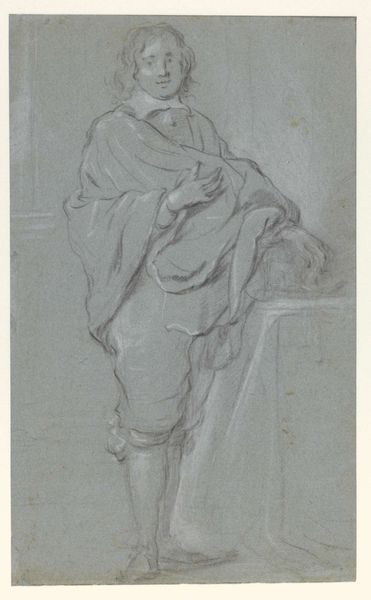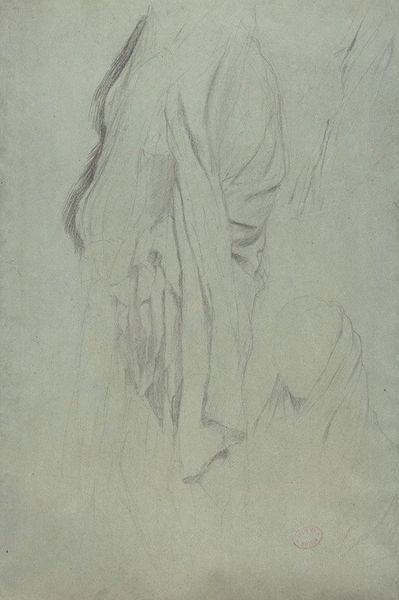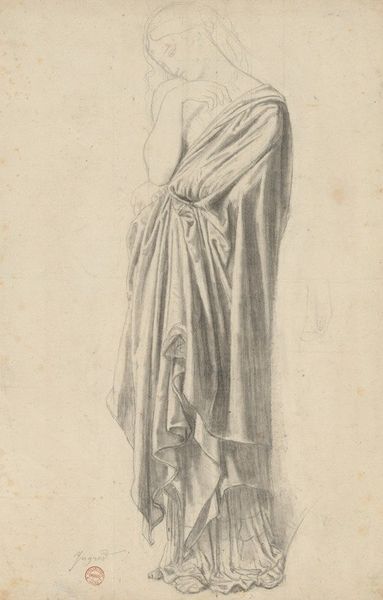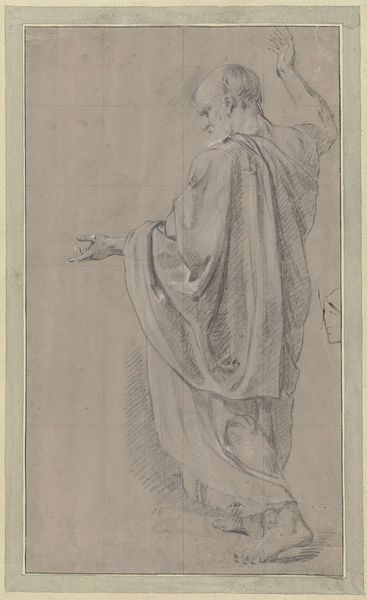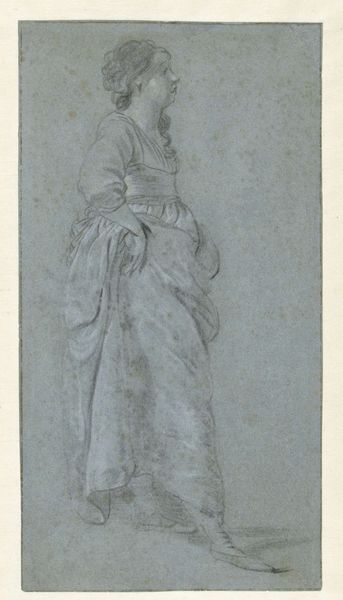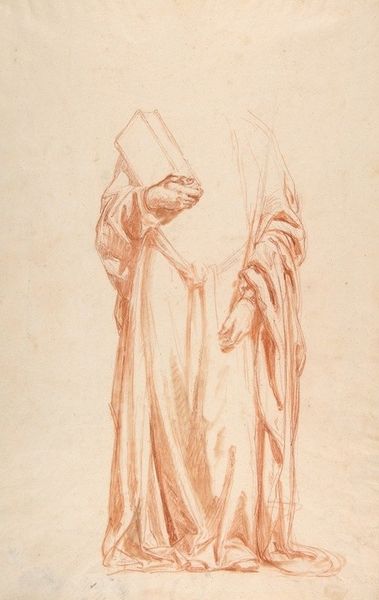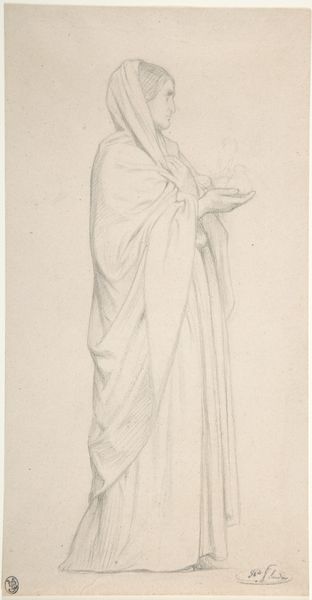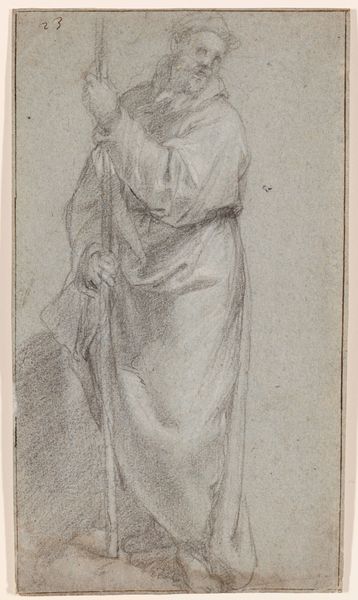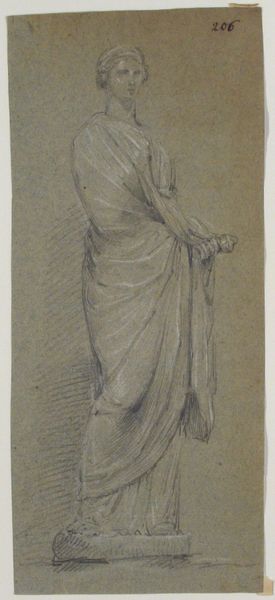
drawing, paper, pencil
#
portrait
#
drawing
#
pencil sketch
#
charcoal drawing
#
figuration
#
paper
#
pencil drawing
#
pencil
#
academic-art
Dimensions: height 410 mm, width 240 mm
Copyright: Rijks Museum: Open Domain
Curator: We are looking at "Zittende Madonna," a drawing created by Nicolas Colombel after 1686. It is executed in pencil on paper. The artwork depicts the Virgin Mary. Editor: Immediately, the subtle rendering strikes me. The use of light and shadow creates a sense of depth and softness; it’s remarkable how much the artist has conveyed using such a limited tonal range. Curator: Colombel was part of an artistic milieu that was deeply enmeshed within religious and political power structures of his time. Understanding his work requires acknowledging how gender, religion, and power intersected in 17th-century artistic expression. The portrayal of Mary, particularly her seeming passivity and acceptance, carries heavy ideological baggage in the light of feminist interpretations. Editor: From a purely compositional viewpoint, the arrangement of the drapery, the way it folds and falls, it contributes so much to the overall dynamism. Semiotically speaking, the textures add to that sense of drama. The visual effect borders on sculptural. Curator: It's fascinating to examine how artistic depictions of Mary were used to reinforce certain societal ideals of femininity and motherhood. I encourage us to remember, even in devotion, Mary signifies multiple social concepts. The delicate use of pencil almost softens what would otherwise be seen as powerful, arguably dangerous ideals for women to aspire to, such as servitude and obedience. Editor: But the composition pulls you in as a result. Her gaze, directed away, adds to the mystique, beckoning a deeper exploration. One can nearly feel the smoothness of the veil draped so carefully. The precision is really arresting here. Curator: By placing this within its historical moment, we can critically engage with the legacy of the church and patriarchal societal structures. The act of seeing "Zittende Madonna" must be considered an intellectual project, prompting inquiries into what power means in both that time and ours. Editor: Yes, by focusing on her composition, textures, and play of light, this portrait reveals how form embodies an essential spirit, inviting us to reflect more. Curator: A reflection of its time. Editor: I concur; let us remember those ties.
Comments
No comments
Be the first to comment and join the conversation on the ultimate creative platform.

